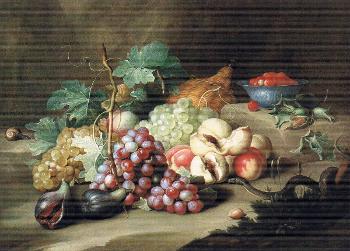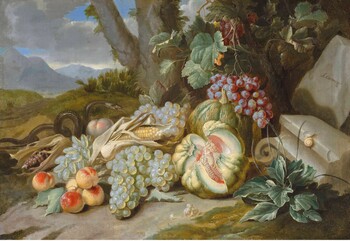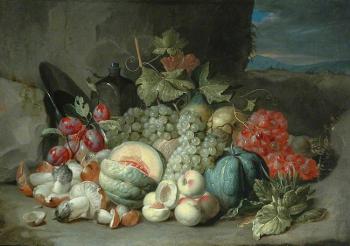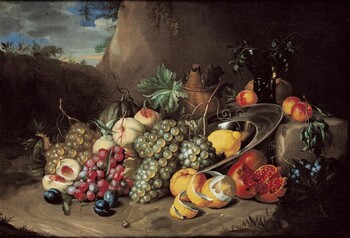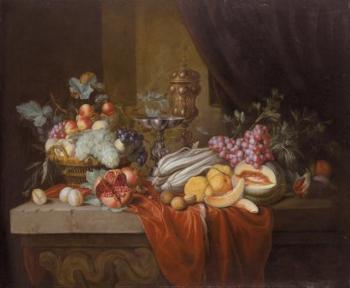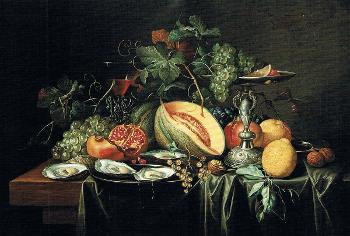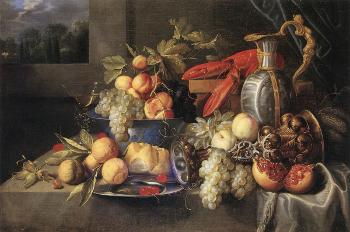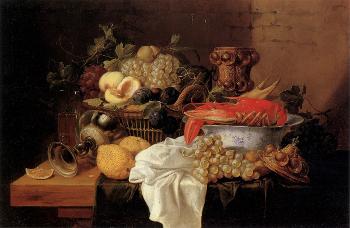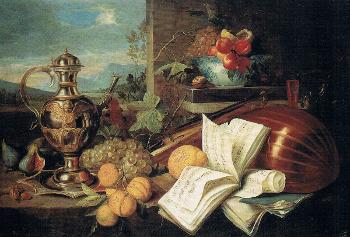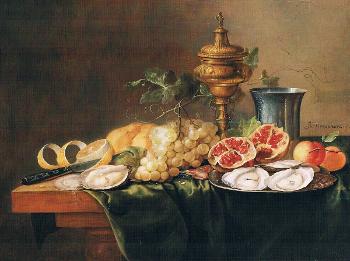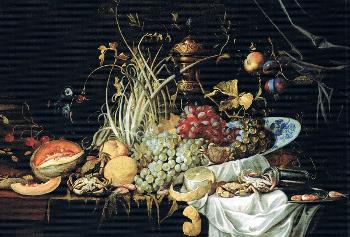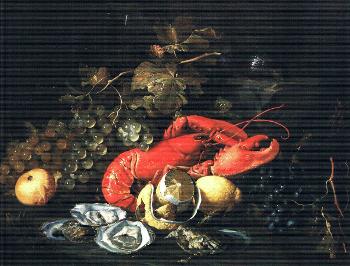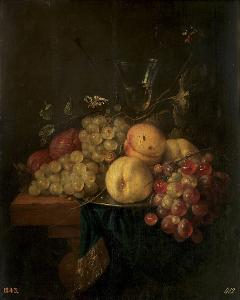8.700 €
A fruit still life with corn cobs, walnuts and a Roemer glass filled with white wine
Oil on canvas : 59,1 X 79,6 cm
Signed middle right “Alex Coosemans f.”
Frame : is being restored
Provenance : sold at Bukowskis Stockholm, 29/05/96
for 185.000 SEK (+ buyer’s premium) = 21.693 € (+ BP)
In short
Alexander Coosemans was an important still life painter in Antwerp during the second half of the 17th century. Following his studies under Jan Davidsz. de Heem he travelled to Rome around the middle of the century. He was back in Antwerp in 1651, where he must have painted our Italianate still life shortly after his return.
About Alexander Coosemans
Flemish painter
Antwerp 1627 – 1689 Antwerp
Still life painter.
Painter of fruit, flower, hunting and Vanitas still lifes.
Pupil of Jan Davidsz. de Heem (Utrecht 1606 - 1684 Antwerp) from 1641 onwards. Although de Heem had a huge influence on many Flemish and Dutch still life painters Coosemans is one of the few known pupils that he had.
Jan Davidsz. de Heem (Utrecht 1603 – 1683/84 Antwerp) was one of the most, if not the most important 17th century “Dutch” still life painters. Jan was indeed born and trained in Holland, but he bloomed in Flanders, in Antwerp. In the early 1630s he moved with his wife and his son Cornelis from Leiden to Antwerp, where he spent his most productive years until the end of the 1650s. Jan must then have lived the major part of the 1660s in Utrecht until the French invasion of Holland in 1672, when he fled, as so many of his colleagues, back to Antwerp. He remained here until his death in 1683 or 1684.
Our painter was accepted as a Master in the Painter’s Guild of Saint Luc in Antwerp in 1645 at the age of eighteen.
He is documented in Rome in 1649 and in 1651, where it is thought he did not stay for a long time.
An important number of still life painters of very diverse origin were active in the Eternal City: besides Italian artists there was a fair number of Northern (Flemish, Dutch, German) and French painters. All influenced each other, while written sources and signed works can be remarkably scarce. It is therefore very complicated to untwine the interchange between the Flemish artists David de Coninck, Abraham Brueghel (who luckily very often signed his paintings) and Alexander Coosemans and the Italian artists Michelangelo del Campidoglio, Pietro Navarra and Giovanni Bagnoli.
Coosemans must have returned to Antwerp already in 1651, where he remained for the rest of his life. He never married.
There is only one dated painting known by him, from 1660.
About our painting
Our painting stands very close to another signed, but slightly smaller still life by Coosemans, also on canvas: it was sold at the Dorotheum Vienna in March 2004 for 34.160 €. Our painting was bought by the previous owner at Bukowskis in Stockholm for 21.693 € + buyer’s premium.
Coosemans must have painted several of the Italianate still lifes during the early 1650s in Antwerp, following his return from Rome. These still lifes are set against an exterior wall, sometimes with a partly visible landscape in the background. Other examples sit in the Quensland Art Gallery in Brisbane, Australia and in the Bowes Museum in Durham, UK.
The typical German Roemer at right is filled with white wine. It is easily recognizable by its decoration of the stem with prunts to ensure a safe grip. The Flemish and Dutch imported wine from the Bordeaux region in France and from nearby Germany, from the valleys of the Moselle and the Rhine, hence the popularity of these German glasses.
Why should you buy this painting?
Because it testifies of Coosemans’ stay in Rome, as it was painted in Antwerp shortly after his return home.
Comparative paintings
Click photos for more details

